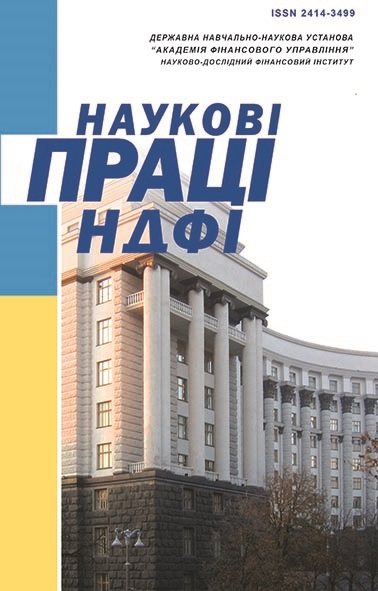
|
№ 4/2020
2. World Health Organization. (2011). Impact of Economic Crises on Mental Health. Retrieved from www.euro.who.int/__data/assets/pdf_file/0008/134999/e94837.pdf. 3. Suhrcke, M., Stuckler, D., Suk, J. E., Desai, M., Senek, M., McKee, M. et al. (2011, June 11). The Impact of Economic Crises on Communicable Disease Transmission and Control: A Systematic Review of the Evidence. PLoS ONE. DOI: 10.1371/journal.pone.0020724. 4. Papava, V. (2020, January). Coronomic Crisis: When The Economy Is A Hostage To Medicine. Retrieved from www.researchgate.net/publication/340264785_Coronomic_Crisis_When_The_Economy_Is_A_Hostage_To_Medicine. 5. Iefymenko, T. (2016). Fiscal and Monetary Security of National Economy. Kyiv: SESE “The Academy of Financial Management”. Retrieved from afu.kiev.ua/getfile.php?page_id=456&num=2 [in Ukrainian]. 6. Kharazishvili, Yu. M. (2019). System security of sustainable development: assessment tools, reserves and strategic implementation scenarios. Kyiv: NAS of Ukraine, Institute of Industrial Economics. Retrieved from iie.org.ua/monografiyi/sistemna-bezpeka-stalogo-rozvitku-instrumentariy-otsinki-rezervi-ta-strategichni-stsenariyi-realizatsiyi [in Ukrainian]. 7. Arzhevitin, S., & Drobiazko, A. (2020). Updating of approaches to justification of Ukraine’s anti-crisis monetary policy. Finance of Ukraine, 4, 7–26. DOI: 10.33763/finukr2020.04.007 [in Ukrainian]. 8. Lyubich, O. O., Bortnikov, G. P., & Drobyazko, A. O. (2020). Comparative analysis of state-owned banks’ role in the economy of eastern Europe countries and Ukraine. Financial and credit activity: problems of theory and practice, 1 (32), 57–64. DOI: 10.18371/fcaptp.v1i32.200286. 9. Lyubich, O., & Drobiazko, A. (2020). Macroeconomic aspects of financial stability of Ukraine. Finance of Ukraine, 1, 8–25. DOI: 10.33763/finukr2020.01.008 [in Ukrainian]. 10. Drobiazko, A., & Sigua, G. (2018). Management of indicators of financial security of the state in the context of increasing national protectionism. Modern Tendencies of Development of Economy and Economic Science, 61–65. Tbilisi [in Russian]. 11. Lyubich, O., & Drobyazko, A. (2018). Indicators of economic security of Ukraine as a tool of crisis management. Global trends and prospects: the world economy and Ukraine, 44–53. Kyiv: Zapovit. Retrieved from razumkov.org.ua/uploads /article/2018_global_trendns.pdf [in Ukrainian]. 12. Drobiazko, A., Dunaiev, B., & Lyubich, O. (2019). Modeling of monetary regulation of economic reproduction. Mathematical modeling in economics, 4 (17), 99–117. Retrieved from www.mmejournal.in.ua/index.php/mmejournal/article/view/89 [in Ukrainian]. 13. National Bank of Ukraine. (2020, October 1). Monthly surveys of Ukrainian enterprises. Retrieved from bank.gov.ua/ua/news/all/schomisyachni-opituvannya-pidpriyemstv-ukrayini-veresen-2020-roku [in Ukrainian]. |
|
|
|
|
THE ACADEMY OF FINANCIAL MANAGEMENT |

|
|
|



